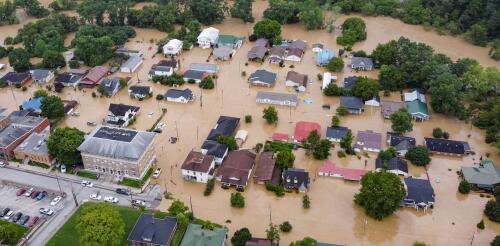Climate change
Climate change risk factors can now be calculated as investment risks with a tool launched by Bloomberg and Riskthinking.AI, a data and software company, the two firms announced. The tool assesses the physical risks posed to companies by climate change so that investors and advisors can take these factors into consideration when making investments, the companies said. The risks that are used in the assessment are those named by the United Nations’ Intergovernmental Panel on Climate Change. “Combining Bloomberg’s data on more than one million physical assets with Riskthinking.AI’s highly granular data-set of global climate change projections and proprietary methodology, the indicators provide Bloomberg users with a new and powerful way to assess their exposure to floods, droughts, wildfires, and other climate vulnerabilities,” the firms said in a press release. “The impact from extreme weather events is of growing concern...
Pre-COP talks are taking place this week to lay the groundwork for negotiations at the UN climate summit in late November. The COP28 presidency and two renewable energy organisations have urged governments to triple renewable energy capacity by 2030. A new report from the UAE presidency, the International Renewable Energy Agency (IRENA) and the Global Renewables Alliance says renewable energy capacity needs to “reach more than 11,000GW” by the end of this decade. IRENA’s analysis, which forms the basis of the report, “warns that the energy transition is dangerously off track”, according to director-general Francesco La Camera. He adds that “immediate, radical collective action” is now needed. It also calls for a doubling of energy efficiency with set target dates, financial incentives, awareness campaigns and strong regulatory frameworks. Many of the world’s major economies are already on board with ren...
There are few things tastier than the crisp bite of a cold IPA…for now. A recent study published in the journal Nature Communications found the changing global climate may be affecting the flavor and cost of beer. A warmer and drier climate is expected to lower the yield of hops — the aromatic flowers of the Humulus lupulus plant that give beer its signature bitter flavor — in Europe up to 18 percent by 2050. The alpha acid content of hops is also expected to drop as crops begin to ripen earlier. “These climate variations may cause changes in the essential oils of particular varieties of hops,” said Herbert Bruce, assistant professor of practice for undergraduate education in Virginia Tech’s Department of Food Science and Technology and co-creator of the university’s official Fightin’ Hokies beers. Bruce says that temperature and rainfall are a big part of that, w...
Gas stoves are a leading source of hazardous indoor air pollution, but they emit only a tiny share of the greenhouse gases that warm the climate. Why, then, have they assumed such a heated role in climate politics? This debate reignited on Jan. 9, 2023, when Richard Trumka Jr., a member of the U.S. Consumer Product Safety Commission, told Bloomberg News that the agency planned to consider regulating gas stoves due to concerns about their health effects. “Products that can’t be made safe can be banned,” he noted. Politicians reacted with overheated outrage, putting gas stove ownership on a par with the right to bear arms and religious freedom. CPSC Chair Alexander Hoehn-Saric tried to douse the uproar, stating that he was “not looking to ban gas stoves” and that his agency “has no proceeding to do so.” Neither does the Biden administration support a ban, a White House spokesperson said. Nevertheless, congressional Republicans raced to t...
U.S. weather disasters are getting costlier as more people move into vulnerable areas and climate change raises the risks of extreme heat and rainfall, National Oceanic and Atmospheric Administration officials warned as they released their annual billion-dollar disasters report on Jan. 10, 2023. Even with an average hurricane season, 2022 had the third-highest number of billion-dollar disasters in the U.S. since 1980. In all, there were 18 disasters that each caused more than US$1 billion in damage in the U.S. The list included three hurricanes, two tornado outbreaks, a destructive fire season, several extreme storms and a drought that disrupted sectors across the economy. 2022 had 18 disasters that exceeded $1 billion each in damage. NCEI/NOAA It was also the third-costliest year, with past years adjusted for inflation, due primarily to Hurricane Ian’s widespread damage in Florida. Together,...




